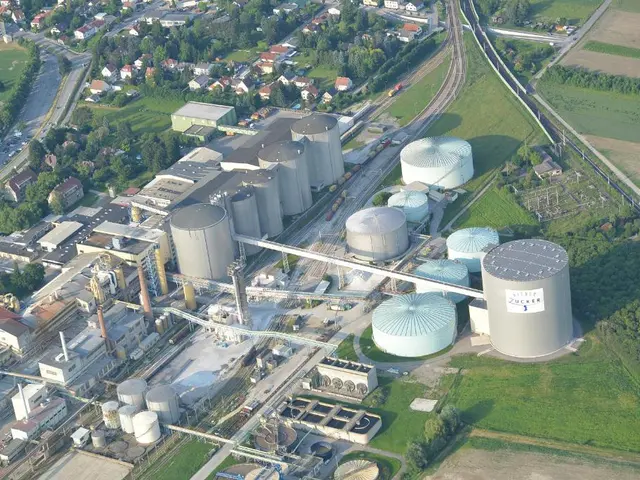Privacy Protection in the Digital Realm: Ensuring Anonymity in the Interconnected World
In the digital age, protecting individual privacy is paramount, especially in network environments where sensitive data is transmitted. Network data anonymization plays a crucial role in this regard, transforming identifiable information into an anonymous form, preventing identification of specific individuals.
Key Anonymization Techniques
Anonymization techniques vary, from IP address anonymization, timestamp anonymization, and protocol and payload anonymization, to database-level techniques like data masking, tokenization, and dynamic data masking. Examples of anonymization tools include Anonymize-it, IPFIX anonymizers, and custom scripts.
Balancing Privacy and Data Utility
Balancing privacy and data utility is a key challenge. More aggressive anonymization often results in less useful data, making it essential to find a balance that maintains data's integrity and utility for analytics or AI without exposing individuals' identities.
Best Practices for Network Data Anonymization
Best practices for network data anonymization include conducting proper risk assessment, applying multiple techniques, testing anonymization effectiveness, documenting procedures, and staying updated on research. Organizations will need to demonstrate that their anonymization approaches meet increasingly strict privacy regulations such as GDPR, CCPA, and HIPAA.
Anonymization in End-to-End Networking Environments
Current best practices for implementing data anonymization in end-to-end networking environments emphasize a combination of robust anonymization techniques, strong encryption, and comprehensive access control aligned with legal and operational contexts. Key practices include:
- Removing direct identifiers such as names, ID numbers, and replacing them with robust pseudonyms when necessary to reduce re-identification risk.
- Applying end-to-end encryption for all communication channels to secure data in transit and prevent unauthorized interception.
- Using Identity and Access Management (IAM) with multi-factor and adaptive authentication, enforcing least privilege principles to limit access to anonymized data within segmented network zones.
- Employing data masking and synthetic data generation where appropriate, especially for AI model training and testing environments.
- Implementing Data Loss Prevention (DLP) solutions to monitor and block unauthorized data transfers.
- Conducting risk assessments for re-identification and iterative mitigation.
- Integrating anonymization within Zero Trust architectures.
Challenges in Network Data Anonymization
Despite its benefits, network data anonymization presents challenges such as preserving network topology, maintaining data integrity, and ensuring compatibility with analysis tools. In high-speed network environments, anonymizing network data at scale without introducing significant performance overhead or latency presents technical challenges.
Deanonymization Attacks and Ongoing Challenges
Deanonymization attacks, such as correlation attacks, are growing more sophisticated and present ongoing challenges. Viewing anonymization as an ongoing process rather than a one-time compliance exercise is crucial for navigating the complex privacy landscape of tomorrow's networks.
Emerging Trends in Network Data Anonymization
Privacy-preserving analytics, federated learning, and legal and ethical frameworks are emerging trends in network data anonymization. Techniques like differential privacy and federated learning are being integrated into network analytics platforms to gain insights without accessing raw data.
Understanding Anonymization Concepts and Techniques
Understanding anonymization concepts and techniques is essential for network professionals, system administrators, and technology enthusiasts for responsible data management. Network traffic contains various identifiers that could potentially expose sensitive information about users, their behaviours, and the systems they interact with.
In conclusion, a multi-layered, context-aware approach combining strong anonymization methods, encryption, hardened access controls, and regulatory compliance checks throughout the data lifecycle in the network environment ensures that anonymized data remains secure, compliant, and useful for analytics or AI without exposing individuals' identities.
- In the digital age, it's crucial to utilize technology for protecting individual privacy, particularly in network environments where sensitive data is transmitted.
- Network data anonymization plays a vital role in this protection, transforming identifiable information into an anonymous form to prevent specific identification.
- Anonymization techniques involve IP address anonymization, timestamp anonymization, protocol and payload anonymization, data masking, tokenization, dynamic data masking, and more.
- Balancing privacy and data utility is essential, as more aggressive anonymization can lead to less useful data without exposing individuals' identities.
- Best practices for network data anonymization include risk assessment, applying multiple techniques, testing anonymization effectiveness, documenting procedures, and staying updated on research.
- In end-to-end networking environments, robust anonymization techniques, strong encryption, and comprehensive access controls aligned with legal and operational contexts should be implemented.
- Understanding anonymization concepts and techniques is essential for network professionals, system administrators, and technology enthusiasts for responsible data management in data-and-cloud-computing and education-and-self-development contexts.




